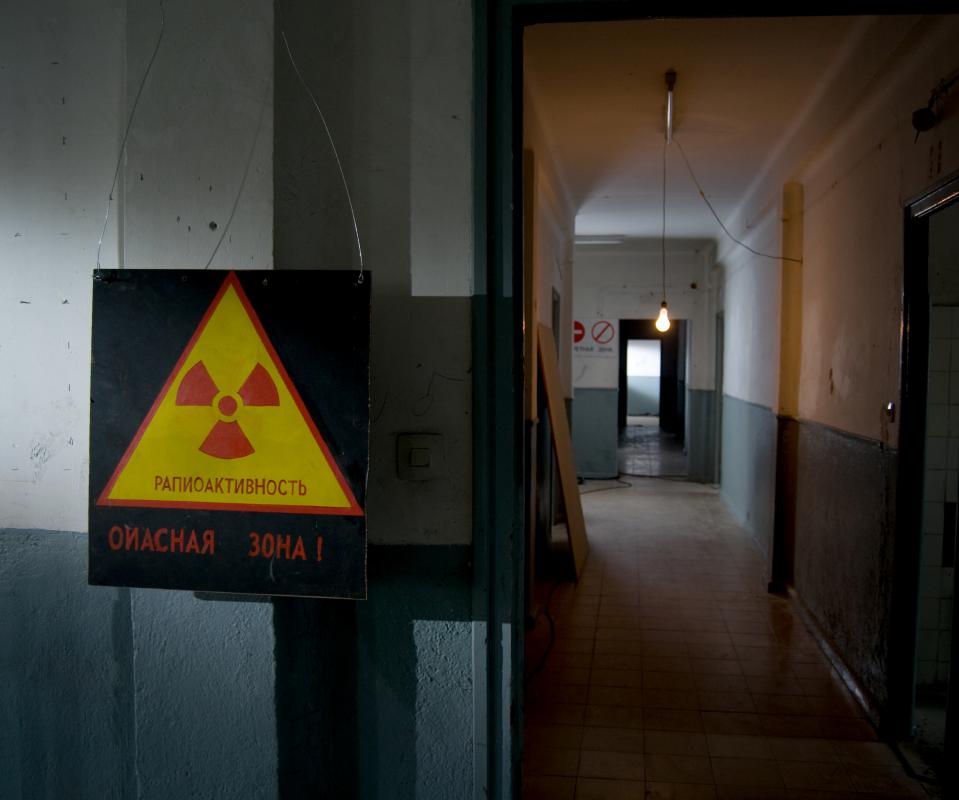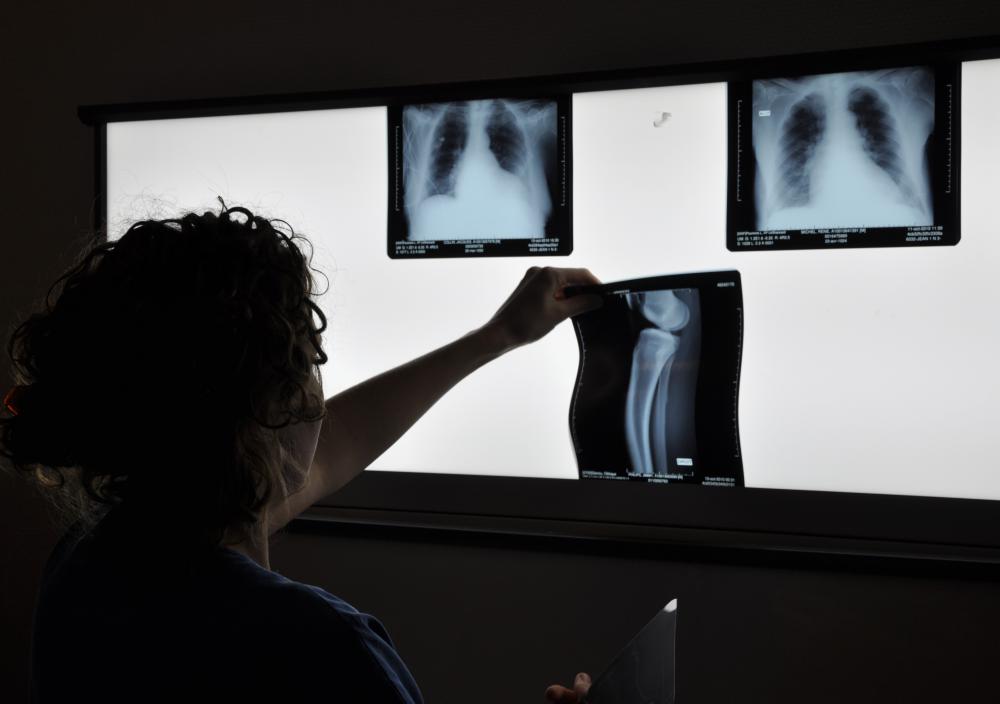At TheHealthBoard, we're committed to delivering accurate, trustworthy information. Our expert-authored content is rigorously fact-checked and sourced from credible authorities. Discover how we uphold the highest standards in providing you with reliable knowledge.
What does Radiation do to Living Cells?
The effects of radiation on living cells vary, depending on the type, the intensity of the exposure, and the cell. For our purposes, “radiation” refers to an emission of ionizing energy, such as neutrons, photons, and high energy charged particles like gamma rays. There are a number of different types, including cosmic radiation from space, terrestrial radiation that is emitted by radioactive elements in the ground, and that which is man-made, such as that released by the detonation of an atomic bomb.
Living cells actually deal with a fair amount of radiation; around 360 millirems per year in the United States, for example. Millirems, incidentally, are units of a dosage; they are used to calculate the results of exposure from things like x-rays in hospitals. The lethal exposure level varies between individuals and it depends on the type of exposure; a single exposure is lethal at around 300,000 millirems, for example, while higher dosages can be tolerated if they are the result of prolonged exposures over time.

At low levels, radiation damage can be repaired by living cells with no ill effects. Higher doses can cause a cell to become sterile, or they can interfere with a cell's ability to reproduce itself properly, causing mutations. Many cancers, for example, are linked with radiation exposure which confuses cells, causing them to mutate and rapidly reproduce. At extremely high doses, radiation causes cell death, through a process called thermalization, which basically cooks a cell from the inside out.

Exposure can cause cell damage in two different ways. In the first sense, direct radiation action, it harms a molecule directly; as for example when radiation interferes with a molecule of DNA, causing cell damage. It can also cause indirect damage, by ionizing molecules, turning them into potentially toxic compounds which interact with healthy molecules and cause damage. Oxygen, hydrogen, nitrogen, and carbon are all very vulnerable to ionization; unfortunately for living cells, these elements make up a great deal of a living organism.

At very high doses, radiation will cause massive organ and tissue damage which is too extensive for the body to repair. This causes acute radiation syndrome, also known as radiation sickness. This condition is often extremely painful and unpleasant, and it leads to death. At lower doses, the damage caused may be on a more subtle level, and it may manifest as cancer or through birth defects caused by damage to reproductive tissues later in life. Some cells are especially vulnerable to damage, especially cells which multiply rapidly; this is why pregnant women need to be careful around sources of radiation, as it can damage the developing fetus.

One of the more dangerous causes of radiation is radioactive isotopes, because these isotopes will accumulate in the body and emit radiation, in contrast with one-time exposure to radioactive particles like those emitted in an x-ray. For this reason, people who work around radioactive isotopes must be very careful, and those used in procedures like medical imaging have very short half lives, meaning that they quickly decay and are expressed by the body.
AS FEATURED ON:
AS FEATURED ON:

















Discussion Comments
When you spray a hose up against the wall, it splatters. What happens when you spray an ionizing radiation beam from ct scan up against metal or an LED? Does it splatter like the hose with water?
I often wondered about the link between cell phone usage and the possibility of cancer of the brain. Now, I understand it a little better. Thanks.
Can radiation cause a macular hemorrhage in the eye?
The article discussed the damage caused by ionizing radiation, but non-ionizing radiation can also cause biological damage.
Everything in the universe that is warmer than absolute zero emits radiation. Non-ionizing radiation is low energy radiation and does not cause changes to atoms as easily as ionizing radiation. Non-ionizing radiation has a wavelength larger than approximately 10^-8 meters, beginning around ultraviolet light on the electromagnetic radiation scale.
Ultraviolet radiation can cause sunburns and even cancer after prolonged exposure. Visible light is the next type of radiation on the electromagnetic wavelength scale. This light encompasses the various colors that the eye sees. Infrared radiation is the invisible radiation given off as heat.
The next type of radiation is radio frequency waves. Everything from microwaves to cell phones to radio stations, use this type of radiation. High frequency radio waves can create heat and cause tissue damage.
Finally, there are Extremely low frequency waves. This is the type of radiation emitted by power lines and electrical wiring.
@ Anon19189- Sadly, radiation treatment can cause neuropathy as a side effect of treatment even if the cancer is not on the nerve itself. Radiation can cause cell damage not only in cancerous cells, but in normal cells too.
Neuropathy occurs when something causes the Myelin lining around a Schwann cell of a nerve to degrade. This exposes the nerve axon and causes the nerve to short circuit. The nerve either loses the ability to send its signal; characterized by numbness, or it sends random signals characterized by pain or tingling.
Radiation therapy is not the only thing that can cause Myelin deterioration. Chemotherapy drugs, Blood sugar imbalances, and autoimmune disorders, among other things, can cause Neuropathy.
There are remedies out there that can treat and prevent neuropathy. Drugs and therapies are available to help mask the pain, tingling, and numbness. There are also claims that B vitamins like B1 and B12 help to repair damaged nerves. A doctor will be able to explain this all professionally.
If cancer cells are present on a nerve and radiation is used, will the nerve be damaged?
Post your comments